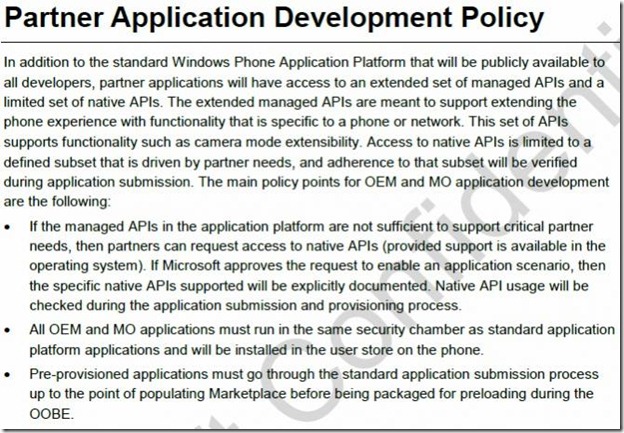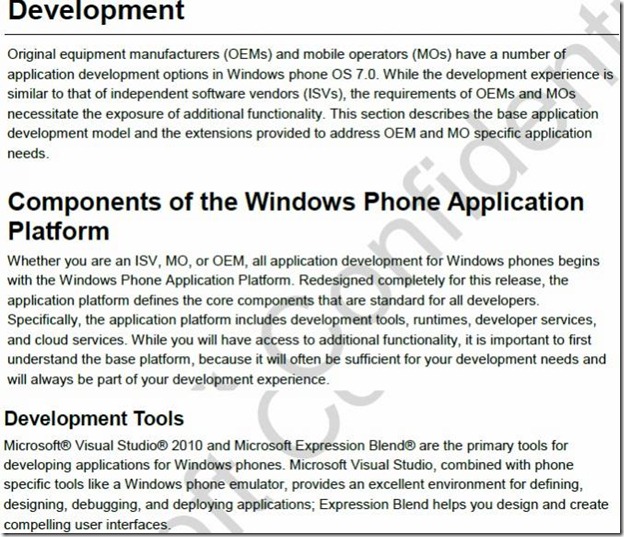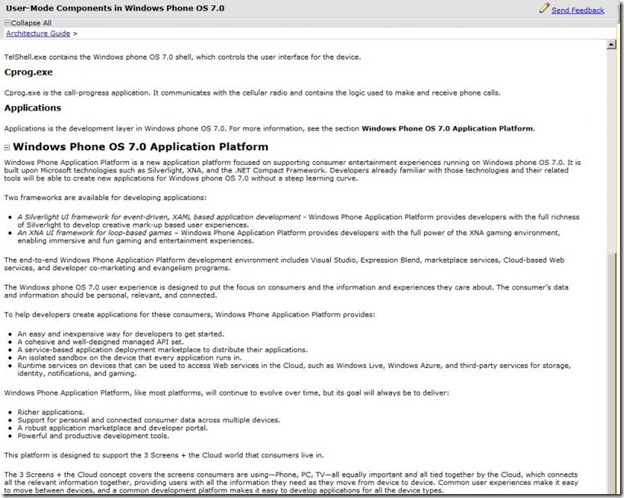Only 3 days have passed, but some undisclosed, private & confidential papers have been exploded in the internet already. The documents contain developer requirements, tools requirements, partner application development policy and much more. It’s a shocking blow for Microsoft, sure I am. Because, they could loose some market place because of these leakage.
From the documents its clear that WP7 will use both Silverlight and XNA—which makes sense, given the Xbox 360 integration. And the .NET Compact Framework — a mostly clean break from WinMo’s past as far as developers is concerned. It also means it’s quite likely that WP7 will actually allow you to play Xbox 360 games—if not existing titles, then new ones. Maybe even games from the Zune will be ported over, considering the Zune also uses XNA.
Native apps are restricted to OEMs and mobile operators in order to extend the experience and functionality specific to a phone or network. Even then, they’ll be limited to a set of managed APIs that Microsoft will audit during the app submission and provisioning process.
As expected, the OS supports preemptive multitasking — not that Microsoft will necessarily allow its devs (OEMs, mobile operators, and independent software vendors) to send their apps to the background. The primary development tools include Microsoft’s Visual Studio 2010 and Express Blend used in combination with a Windows Phone emulator.
According to the documents:
“As a preemptive multitasking operating system (OS), Windows phone OS 7.0 supports multiple processes running simultaneously on the system. There is no limit to the number of processes that can run on the phone. The only limit is the amount of available system resources.”
In the “development tools” document, it states that “Microsoft Visual Studio 2010 and Microsoft Express Blend are the primary tools for developing applications for Windows phones.”
The “partner application development policy” claims:
“partner applications will have access to an extended set of managed APIs and a limited set of native APIs. The extended managed APIs are meant to support extending the phone experience with functionality that is specific to a phone or network. This set of APIs supports functionality such as camera mode extensibility.”
“If the managed APIs in the application platform are not sufficient to support critical partner needs, then partners can request access to native APIs (provided support is available in the operating system). If Microsoft approves the request to enable an application scenario, then the specific native APISs supported will be explicitly documented.”
So far, not too many surprises for Windows Phone 7. This is Microsoft, after all.
Sources: WMPoweruser, Gizmodo, Engadget






